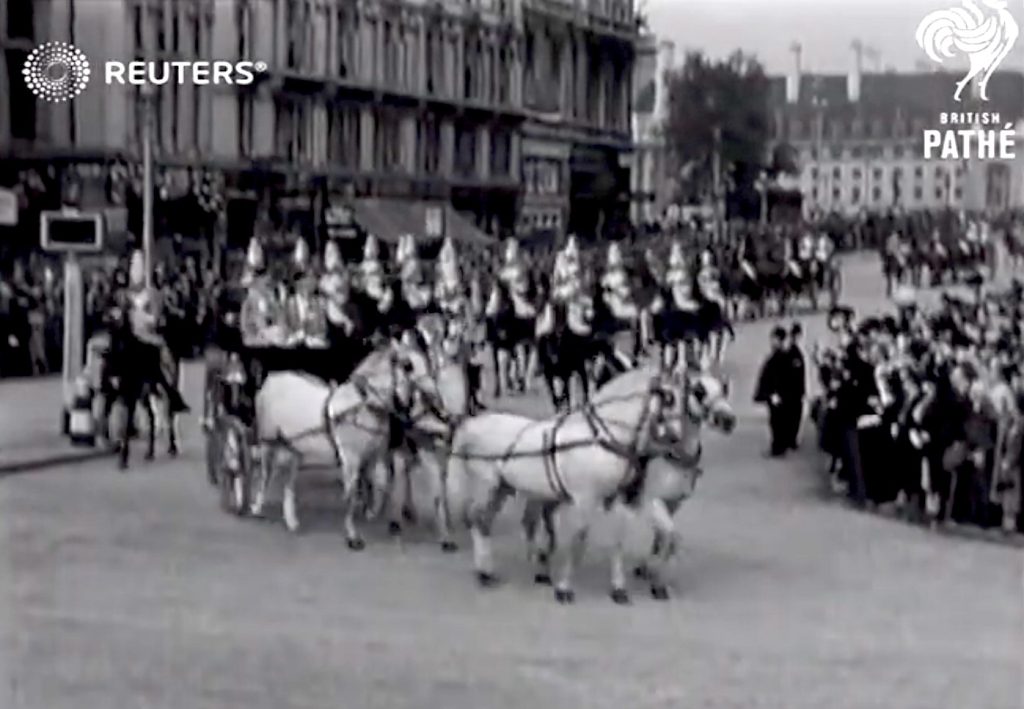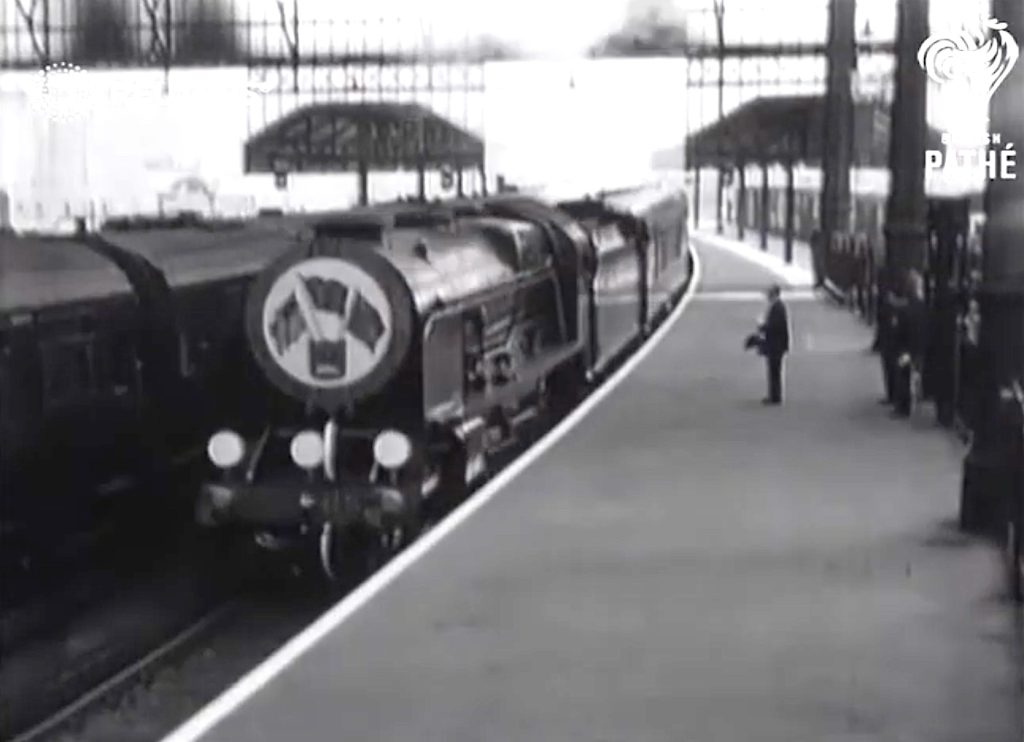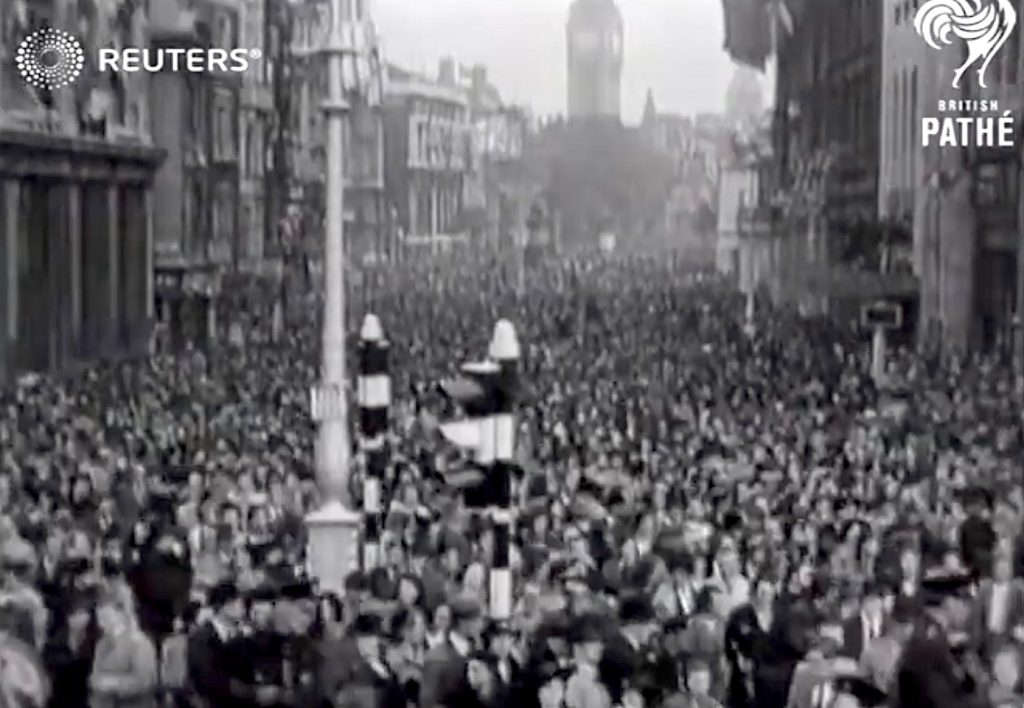OTD in early British television: 22 June 1939

John Wyver writes: On the afternoon of Thursday 22 June 1939 one of the BBC’s mobile control units was stationed at Waterloo while the other was by the Victoria Memorial close to Buckingham Palace. Six weeks or so before the BBC had seen their Majesties off on their tour of Canada and the United States, and now a two-location outside broadcast was welcoming them back.
From 5.13pm for 20 minutes lookers-in saw the arrival of the Royal Train and then the elaborate ceremony of greetings on the platform with, among others, Prime Minister Neville Chamberlain, United States ambassador Joseph Kennedy, and Chairman of the Southern Railway, Mr R. Holland Martin. Freddie Grisewood was the BBC’s man on the spot, and a press report detailed that one television camera ‘was trained on Princess Margaret, following her movements closely’.

The television schedule then carried five minutes of Gaumont British newsreel coverage of the tour before in a further 40-minute broadcast commentator Edward Halliday showed the royal coach coming to Buckingham Palace and then George VI and Queen Mary, along with Princesses Elizabeth and Margaret, waving from the balcony. Also featured, according to the Programme-as-Broadcast form were ‘general crowd scenes’.

A Pathé newsreel of the events of the day (from which the stills her are screengrabs) gives some sense of how much excitement this occasion prompted. The throngs of watchers in the streets seem simply astonishing to our eyes today.
The interest prompted by the day’s events is also indicated by the BBC’s coverage being shown live via Baird big-screen technology in the New Victoria Cinema, and also in the Marble Arch Pavilion and Tatler News Theatre. At this point the BBC was relaxed about cinemas screening outside broadcasts, and as long as this licence was not extended to studio programmes, distributors and exhibitors were similarly prepared to permit such presentations.
In his recently published collection What Made Cinema? Essays on Visual Culture and Early Film (Sticking Place Books, 2025) Ian Christie includes his excellent essay ‘Bringing the empire home: imperial speactacle in early cinema’ in which he considers the symbolic significance of departures and arrivals in short turn-of-the-century films. As he writes,
It is the argument of this essay that the geography and panoply of Empire, which were fast approaching their climax in the last years of the century, provided an ideal subject for this new genre [of departure and arrival films], helping to give its performances meaning and appeal.
Films of departing soldiers, Ian Christie proposes, contributed to a sense of imperial unity at the time of the controversial Anglo-Boer War, but he also makes the fascinating point that in shots of monarchs, statesmen and others standing on a quayside or a railway platform ‘they become briefly visible as travellers, sharing something of the experience of their ordinary viewers.’
And at a moment four decades on from the first films, when tensions leading to Imperial collapse were becoming increasingly apparent, there is a sense that the television coverage of and newsreels about the departure and return of the King and Queen from Canada (a Dominion but still central to the empire) and the United States (the colony that got away a century and a half before) underpinned imperial unity while at the same time, perhaps, democratising the spectacle and its myriad associations.
As a footnote, it is pleasing to note that according to the Daily Telegraph a radio engineer in Guernsey, 200 miles away, reported excellent reception of the OB pictures transmitted from Alexandra palace.
[OTD post no. 187; part of a long-running series leading up to the publication of my book Magic Rays of Light: The Early Years of Television in Britain in January 2026.]
Leave a Reply